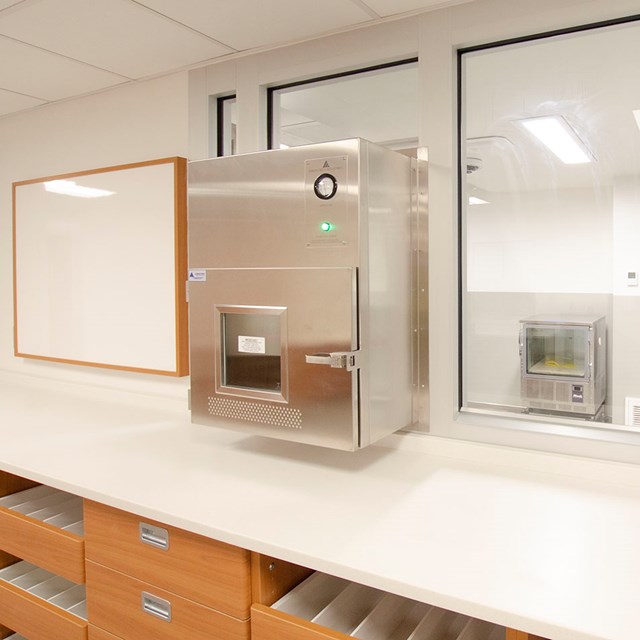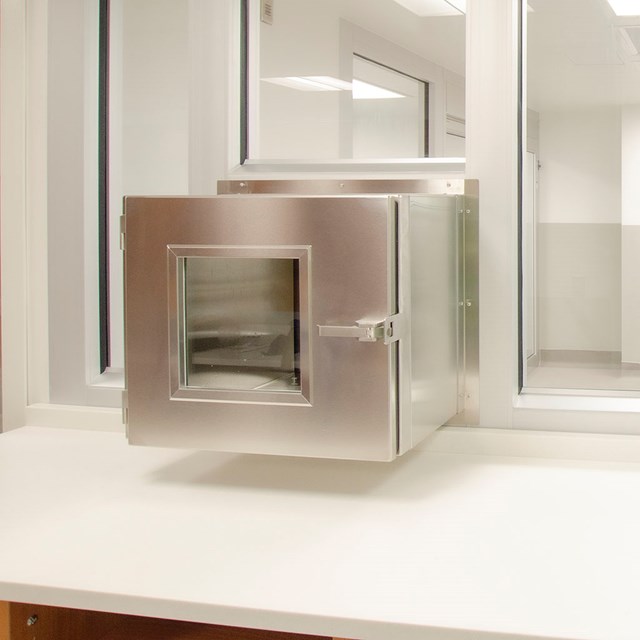
Pass-Through Particulars
What to Ponder When Purchasing a Pass-Through
Pass-through boxes (or pass-thrus) are an essential part of an efficient cleanroom suite. They provide a means of transferring materials from the cleanroom to the workroom with minimal transmission of potentially contaminated air. This blog is designed to assist you in navigating various options available in the pass-through market.
Sizing & Location
There are two main determining factors to consider when sizing a pass-through: the size of the items being transferred (interior should accommodate the largest item) and the pass-through location. If numerous large batches are planned, consider a larger size pass-through to reduce the need for multiple transfers. Determining the bin or basket size that will be used to hold the items is a good starting point.
Most manufacturers state the internal dimensions of the box in the name; however, the overall dimensions need to be taken into account. For instance, a pass-through with 18”w X 18”d X 18”h interior dimensions may require a wall opening of 22.75”w X 20”h. The architect should account for the external dimensions of the chosen model; the available location or space may limit the size of the pass-through as well as the direction of the door swing. Most pass-through doors will hinge from the same side (the interlocking mechanism is only located on one side of the box). The door swing location must provide easy access to the interior.
The offset of the pass-through within the wall should also be considered. In order to reduce ledges that may collect dust and contaminants, our recommendation is to minimize how much the box intrudes into the cleanroom. Conversely, this will cause the pass-through to extend further into the workroom or storage room on the other side.
Ensure that the wall can support the unit's weight, especially if it is offset as described above. Typically this is only an issue with the larger units. In that case, ask the manufacturer to provide support brackets and wall blocking requirements.
Filtered vs. Unfiltered
Some manufacturers offer HEPA filtered pass-throughs which filter the air within the interior to minimize contaminants. These are most often used in Hazardous Drug (HD) compounding rooms to pull out any HD particles within the chamber. A purge feature is available with some units, keeping both doors locked until the air has been cycled through the filters. Note that these filtered pass-throughs require a power supply and are also substantially larger and heavier than their unfiltered counterparts.
Interlock Mechanism
A final feature to consider is the interlock mechanism that prevents both doors from being opened simultaneously. There are two types: mechanical and magnetic. Some mechanical interlocks require users to activate a mechanism to open the door. Magnetic interlocks detect when one door is open and use electronically actuated magnets to hold the other door closed. Magnetic interlocks require a power supply for the pass-through, even if it is an unfiltered unit. This added complexity and supporting utilities mean that magnetic interlocks are generally more expensive than their mechanical counterparts.
If you need assistance with choosing or positioning a pass-through within your cleanroom suite, contact Guardian Medical Systems.

